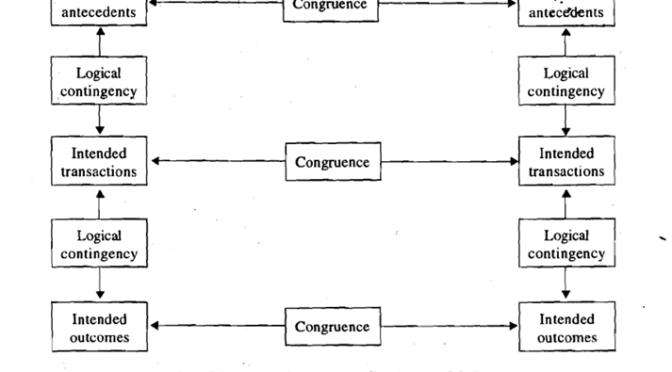The congruence-contingency model of curriculum evaluation is a qualitative approach to evaluation that was developed by Robert Stake in 1975. The model is based on the assumption that curriculum evaluation should be focused on determining the extent to which the curriculum is congruent with the needs of the students and the context in which it is being implemented.
According to him, formal procedures will help increase the objectivity in evaluation. They aim at furnishing data, we can make descriptions and judgements of the curriculum being evaluated. Stake argues that for evaluation purposes, we should not rely only on the statements of objectives aims. We should allow all those ‘affected’ by the curriculum to extensively participate in judging the curriculum.
He further maintains that the data can be collected under the following three bodies of information.
I. Antecedent: This is any condition that exists prior to teaching and learning that may influence the outcomes. For example, prior knowledge, aptitudes, psychological profiles of students, etc., years of experience of teachers, teacher- behaviour, etc.
2. Transactions: Learning transactions that occur between and among teachers and students, students and students and among students and resource people.
3. .Outcomes: These are the consequences of education – immediate and long-range, cognitive and conative, personal and community-wide. For example, students’ performance, achievements, etc. Stake, however, lays stress on even such outcomes as the impact of a new programme on teachers’ perception of their competence.
The term contingencies here refer to the relationships among the variables in three categories: antecedents, transactions and outcomes. Once the evaluator collects views on a curriculum from various sources like students, teachers, support staff, etc., he puts them on a matrix to identify the congruencies and contingencies among them. The model clearly shows that it provides an organizational framework that points to the data to be considered and compares what is planned and what has occurred.
Here are some of the advantages of the congruence-contingency model:
- It is a qualitative approach, which means that it takes into account the subjective experiences of the students and the teachers.
- It is a comprehensive approach, which means that it considers all aspects of the curriculum.
- It is a flexible approach, which means that it can be adapted to different types of curriculums and different contexts.
Here are some of the disadvantages of the congruence-contingency model:
- It can be time-consuming and expensive to implement.
- It requires a high level of expertise to use effectively.
- It can be difficult to get all stakeholders involved in the evaluation process.
Overall, the congruence-contingency model is a valuable tool for educators who want to ensure that their curriculum is meeting the needs of their students. It is a comprehensive and flexible approach that can be used to evaluate all aspects of the curriculum.
Also Read: Approaches of Curriculum Evaluation

Also visit: Prep with Harshita

